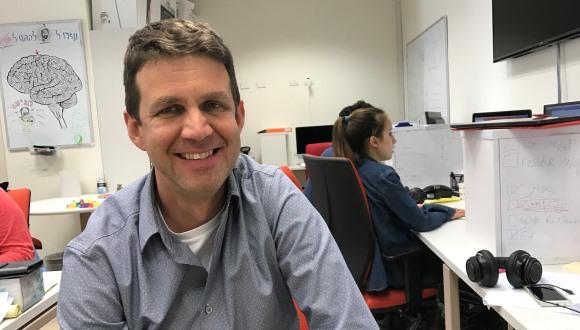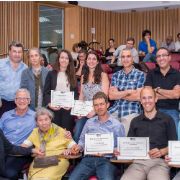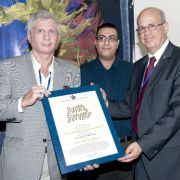Revealing the neural basis of behavioral change
From academic researchers to marketers, and from political strategists to psychologists, a vast array of players wants to know how to get into – and change – our minds.
Now, in a new study funded by a European Research Council (ERC) Starting Grant, neuroscientist Tom Schonberg seeks to discover the underlying mechanism in the brain that determines preferences and changes in behavior.
“Our experiments have shown that people’s choices can be manipulated using a simple combination of a cue and a rapid button press, and that the change can be lasting,” says Dr. Schonberg, a member of the School of Neurobiology, Biochemistry and Biophysics, George S. Wise Faculty of Life Sciences, and of the Sagol School of Neuroscience.
“If we could understand what’s going on in the brain when it assigns or changes preferences, we could use this understanding to effect positive behavioral change. This could lead to novel interventions for health problems such as eating and mood disorders, or addiction,” Schonberg says.
While still a post-doctoral researcher, Schonberg developed a new method of behavioral change. In a set of experiments with snacks, subjects were asked to rank the goodies: Which did they value more and which less? They were shown images of the snacks, and from time to time a picture was accompanied with a neutral auditory cue – a beep. Each time the participants heard the beep and saw the snack, they had to press a button as quickly as possible. Then the subjects were asked to choose between two snacks they initially valued equally, but only one was associated with the cue-and-button-press routine. The scientists found that at the end of the session the majority of subjects now preferred the cued snack over the non-cued snack. Moreover, they found that the preference change remained over time, even months, as revealed by a follow-up session.
Now, at his TAU lab, Schonberg has preliminary data showing he can also change preferences towards pictures of unfamiliar faces and abstract images.
Schonberg and his team are scanning subjects’ brains during the course of current experiments using fMRI at TAU’s Alfredo Federico Strauss Center for Computational Neuro-imaging. They are examining how altered choices change the brain physically over time, immediately after training and several months afterwards.
What does it all mean? Schonberg hypothesizes that very basic and low-level sensory, perceptual and motor neural processes are at play and not high-level cognitive reasoning.
The implications of Schonberg’s work for behavioral change are extensive. For example, Schonberg has begun collaborating with Prof. Yair Bar-Haim of TAU’s School of Psychological Sciences to see if this technique could be used to improve mood in people suffering from depression by enhancing their preference for happy over sad faces.
Schonberg joined the TAU faculty two and a half years ago after completing his post-doc at UCLA and the University of Texas at Austin. He earned his PhD at TAU and is also a graduate of TAU’s prestigious Adi Lautman Program for Outstanding Students.
The ERC funding for Schonberg’s study totals 1.5 million euros over 5 years. TAU ranks 5th in winning European Research Council (ERC) grants among 172 leading European research institutions.






